This is the theme that in the latest theme poll at the bottom of this earlier post came second in the vote, and, as indicated in the winning theme’s post, I’ll now bring you the runner-up without a new poll.
So how can beds be dark? Well, for one thing, people often die in them – including many a famous/infamous person with additional dark associations. Here’s an example: Napoleon’s deathbed in the place he was exiled to on faraway St Helena:
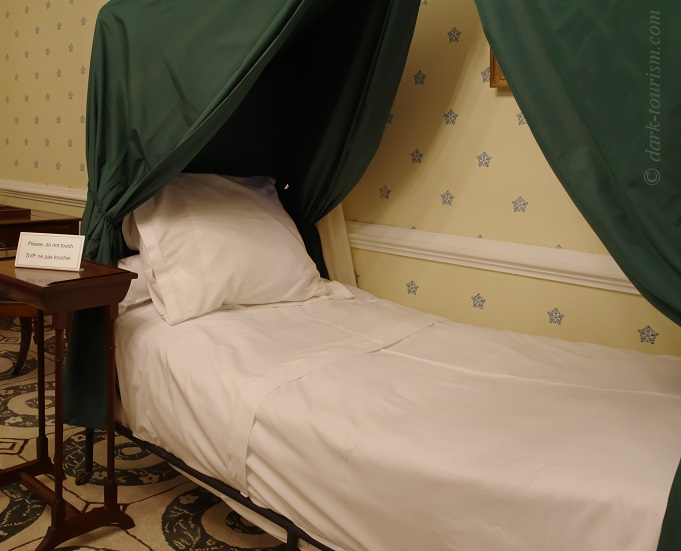
This bed can be seen at Longwood House, the mansion where the captured ex-emperor lived out his days under British guard (St Helena still is a British overseas territory). In fact they even have two deathbeds on display at this house – one he actually died in (this one) and then a second one on which his dead body was lying in state, as it were, before his burial (that other bed featured on this Blog too – namely in this older post). In fact Napoleon’s first grave was also on St Helena, but his body was later exhumed and transferred to France, where it was placed in an exuberantly pompous marble sarcophagus at Les Invalides.
And here’s another deathbed, Lenin’s:
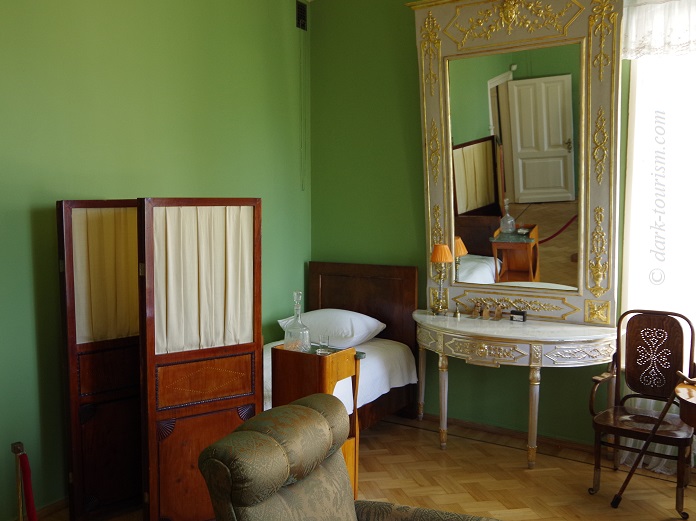
It was in this bedroom that in 1924 Lenin, the first leader of the Soviet Union, breathed his last in his mansion outside Moscow. This mansion was later turned into a cult-of-personality-style museum called Gorky Leninskiye. And of course the embalmed body of Lenin can still be seen in its mausoleum on Red Square.
Not a deathbed but still a bed with dark associations is this following one:

This was the bedroom in the private quarters for Albania’s long-time dictator Enver Hoxha inside a large bunker complex built into the mountainside on the outskirts of the capital city Tirana. Hoxha never actually slept in this bed but it – and the whole bunker complex – were kept operational just in case for many years … More recently, decades after the dictator’s demise and the end of the communist era, the site was turned into a visitor attraction going by the name BunkArt 1.
The next bed to feature here is one with a similar function – and was also never slept in. This was prepared for the president of the FRG (West Germany) inside a Cold-War-era emergency government relocation bunker facility at Marienthal near Ahrweiler that is now also a visitor attraction:
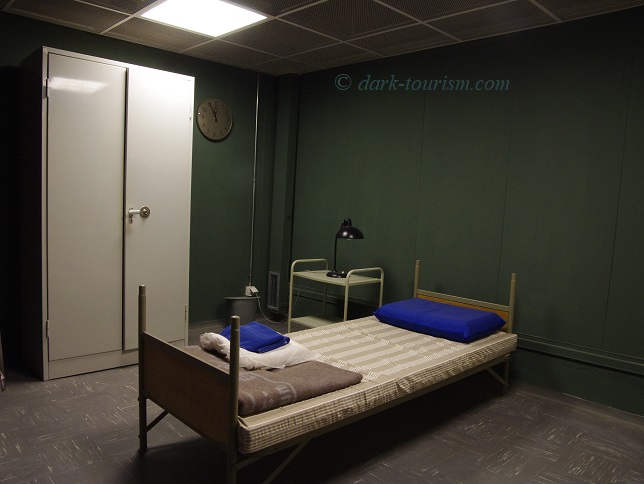
In fact it would only have been the Federal President and the Federal Chancellor who would have had the privilege of having single rooms. Everybody else in the bunker, all ministers, civil servants, staff and the military, would have been housed in large dormitories with two-tier bunk beds … You have to wonder how big shot people like the Foreign Minister or the Finance Minster would have liked that idea …
And here’s another big shot’s bed – and in this case it was actually slept in:
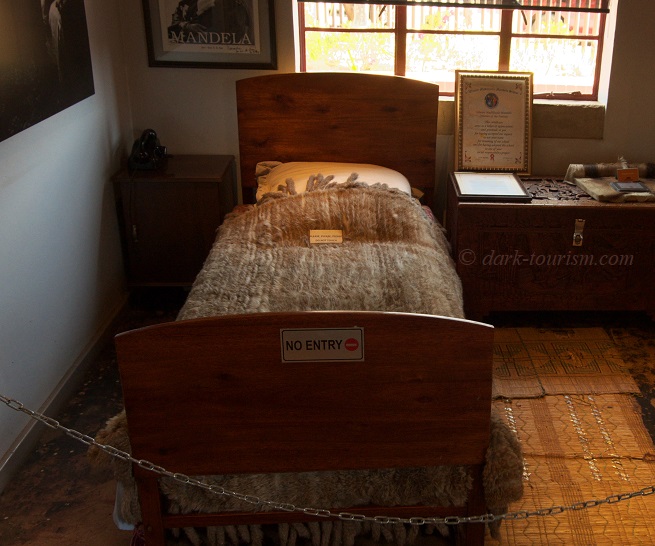
This was Nelson Mandela’s bedroom in his small house in Soweto, a township created during the apartheid era for blacks in the city of Johannesburg. This house was where Mandela used to live when he was still a free man, i.e. before he was captured and imprisoned (e.g. at Robben Island) as a “terrorist” for his resistance activities against the apartheid regime in South Africa. Of course Mandela was later freed, the apartheid regime was brought down and Mandela became the first president of post-apartheid South Africa. Hence this small house has been kept as it was to now serve as something like a shrine to this “national hero”.
While Mandela’s dark story thus eventually had a happy ending, as it were, the same cannot be said for practically everybody who would have slept in these bunk beds:
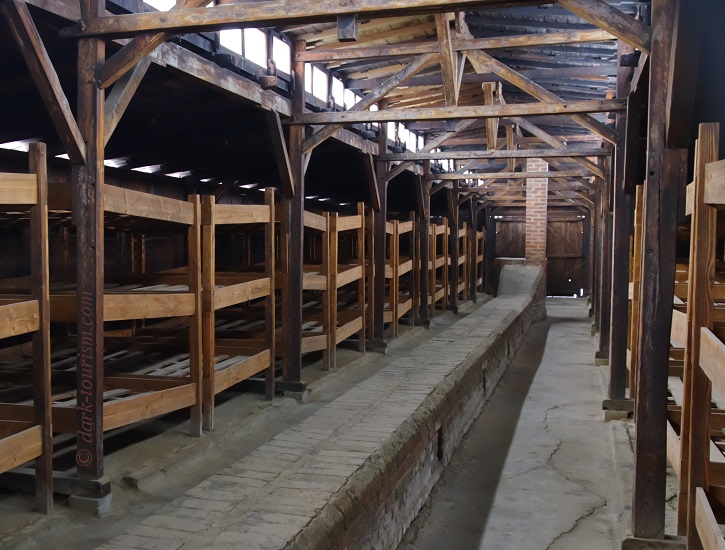
You may have guessed it: these are bunk beds (though not original but reconstructions) inside one of the barracks at the Auschwitz-Birkenau concentration camp/death camp. Many of the Holocaust memorial sites at former concentration camps feature such wooden bunk beds, so an image like this is quite iconic for this very dark chapter in history.
I could have given you numerous further examples of such barracks/bunks, but instead I’ve picked as the next photo one taken at a memorial site at what used to be a hard-labour camp for political prisoners in the early communist ČSSR, namely at Vojna – this image also has bunk beds, though not quite as rough and basic as those at Auschwitz:
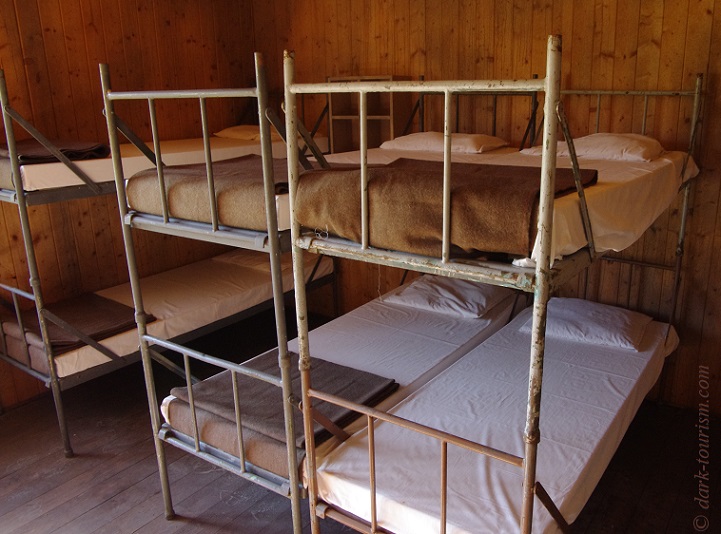
Beds slept in by people who are there against their will obviously include those in regular prison cells too. Here’s an example from my trip to Australia last year – a bed in a cell of Adelaide Gaol (decommissioned in 1988 and later also converted into a visitor attraction):
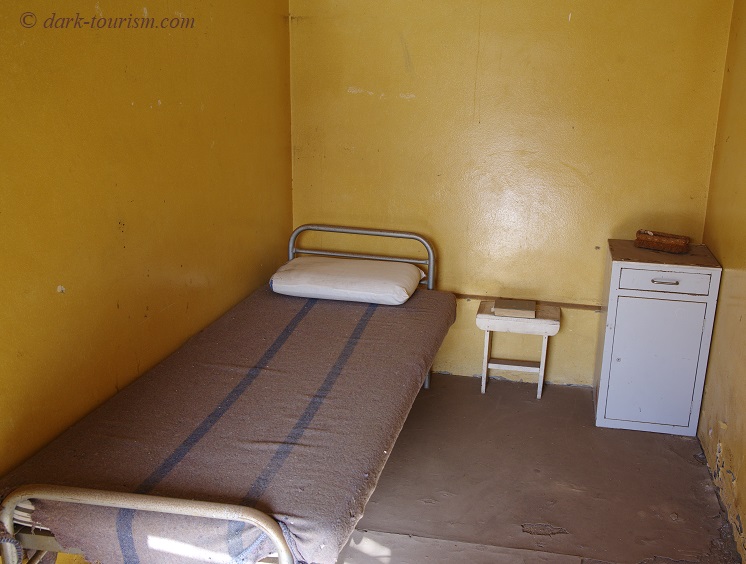
And here’s a bed in a single cell, again for political prisoners, this time at the main remand prison run by the GDR’s secret police, the Stasi, at the infamous Hohenschönhausen complex in East Berlin:
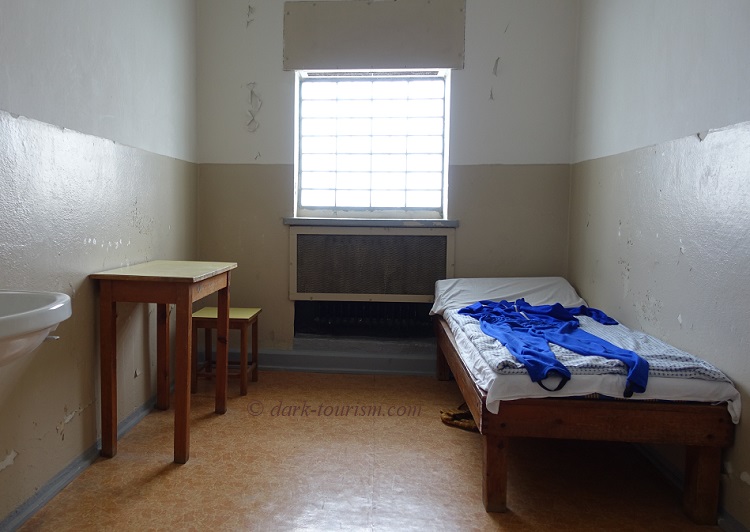
Worse, and much darker, are cells in which victims were not just incarcerated, but also tortured. Here’s a photo of one of the most gruesome places of this sort, namely the Tuol Sleng (aka S-21) prison in Phnom Penh in Cambodia (same photo as the featured one at the top of this post):
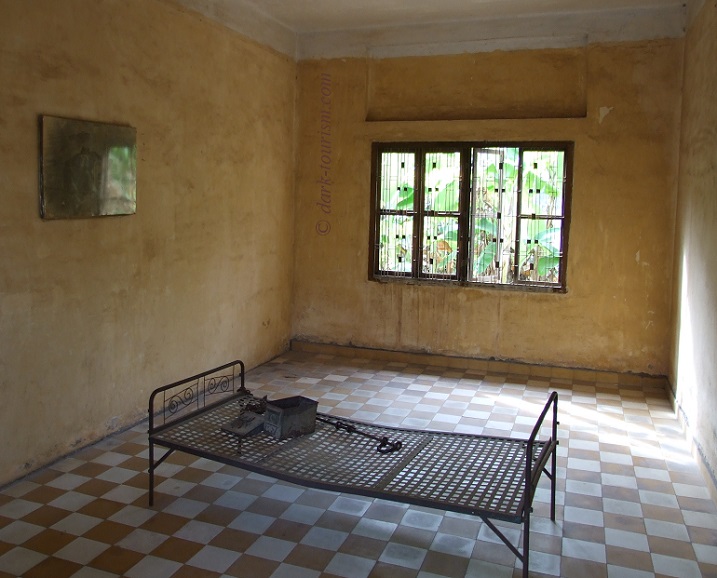
It was on beds like this that the decaying and ghastly mutilated bodies of the final victims of the Khmer Rouge were found by the liberators (the Vietnamese). In today’s memorial a photo of one of those bodies hangs on the wall next to the bed frame that the victim was found strapped to – it is indeed one of the very darkest places that I’ve ever visited.
One more example of a bed frame used in torture, in this case by means of electric shocks, is an exhibit at the Memorial Museum in Santiago de Chile, which documents the dark legacy of the Pinochet dictatorship in Chile:
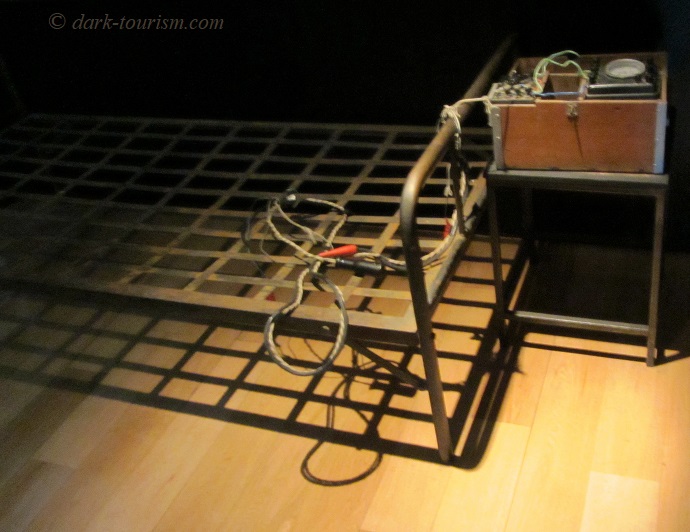
Leaving behind torture but still staying with beds in places that most people would normally rather prefer not to be, let’s move on to hospital beds. Here’s a hall filled with hospital beds at the former quarantine station at North Head, Sydney, Australia:
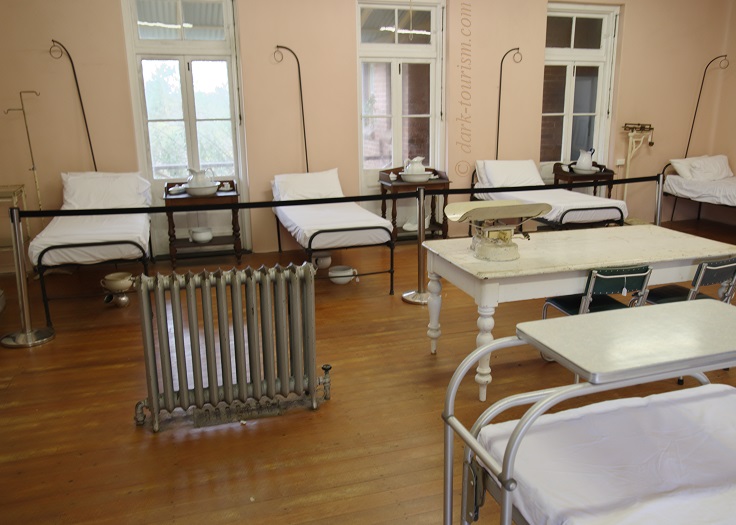
These beds were for immigrants at the quarantine station who actually fell ill with infectious diseases and were hence isolated in this hospital away from the rest of the people who had arrived on ships as immigrants (see below). After this role was taken over by a modern isolation ward at a larger hospital, and immigrants were no longer automatically quarantined on arrival, the complex was converted and opened to the public under the name “Q Station”.
An especially dark hospital site turned into a memorial is the basement of the Vukovar Hospital in Croatia. At the beginning of the Yugoslav Wars, it was here that hundreds of civilians sought refuge during the Battle of Vukovar in 1991. And many of those people were later taken by the Serbs and massacred at Ovcara. After the end of the war and the reinstatement of Vukovar as part of independent Croatia, the hospital basement was converted into a particularly visual sort of memorial, full of white plaster dummies lying in hospital beds, including some pregnant women mannequins. And in one corner stands a cot bed with three white plaster babies:
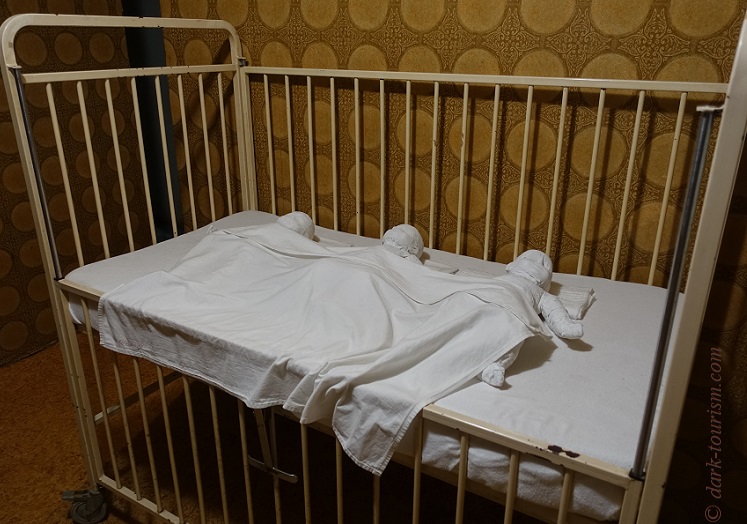
Of great appeal to dark tourists and urbexers alike are abandoned hospitals – for me that is indeed one of the most attractive forms of urbexing, probably because of the silent ghost-town-ness of an abandoned hospital so starkly contrasts with all the noise and hustle and bustle of an operational hospital. One fabled abandoned large hospital complex is Beelitz Heilstätten near Berlin, Germany. Here I found this rusty old hospital bed frame in one of the more dilapidated buildings of the site:
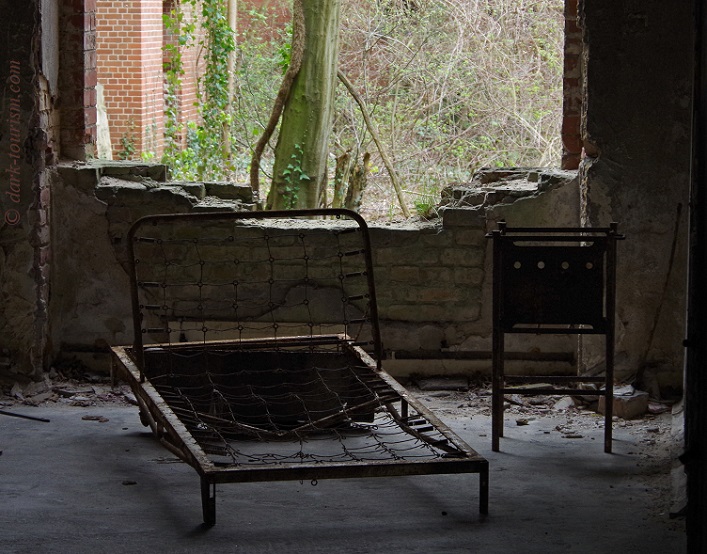
The best abandoned hospital I’ve ever encountered was in Pripyat, the famous ghost town in the Chernobyl exclusion zone – now sadly out of reach due to the Russian war against Ukraine. When I last visited Chernobyl (in November 2018) I poked around in this hospital for about an hour, taking well over a hundred photos. One of my absolute favourites of that lot is this following photo of two neat rows of empty baby beds (cots):
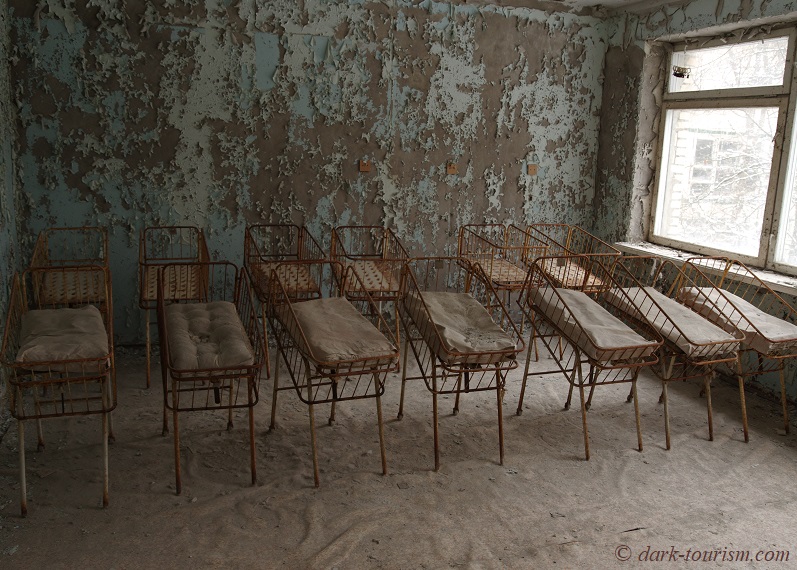
When the babies grew older and turned into children, they would have gone to a nursery/kindergarten – and there are plenty of abandoned kindergartens in Pripyat and other parts of the Chernobyl area. Here’s a photo I took (on that same trip in 2018) at a former dorm room inside the kindergarten of Kopachi, a village outside Pripyat:
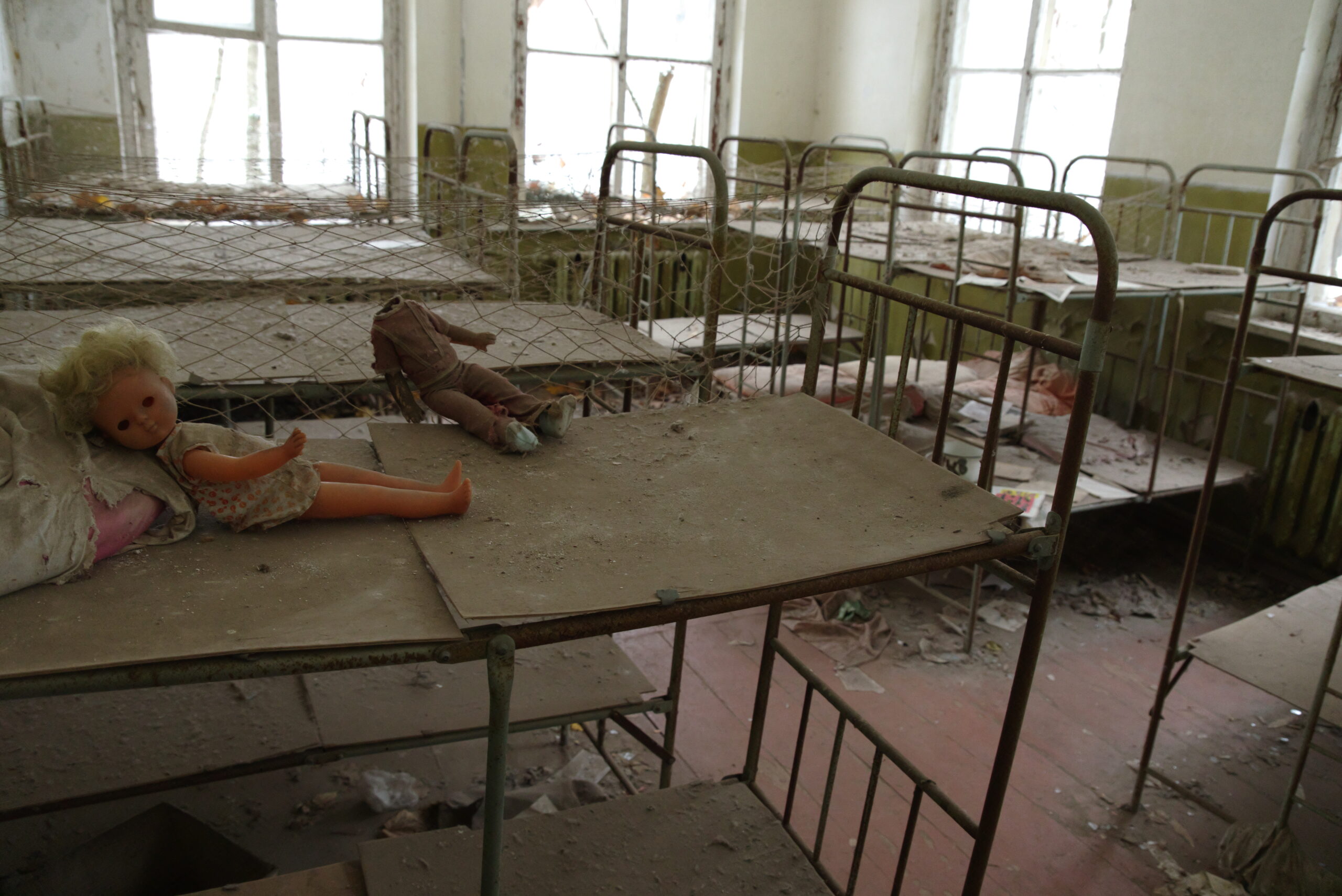
While Pripyat can probably be seen as the “mother of all ghost towns”, there are of course many others. Also very well known is Kolmanskop, an abandoned former diamond mining settlement in Namibia. This has become a veritable tourist attraction, and in one of the buildings an early 20th century bedroom has been reconstructed:
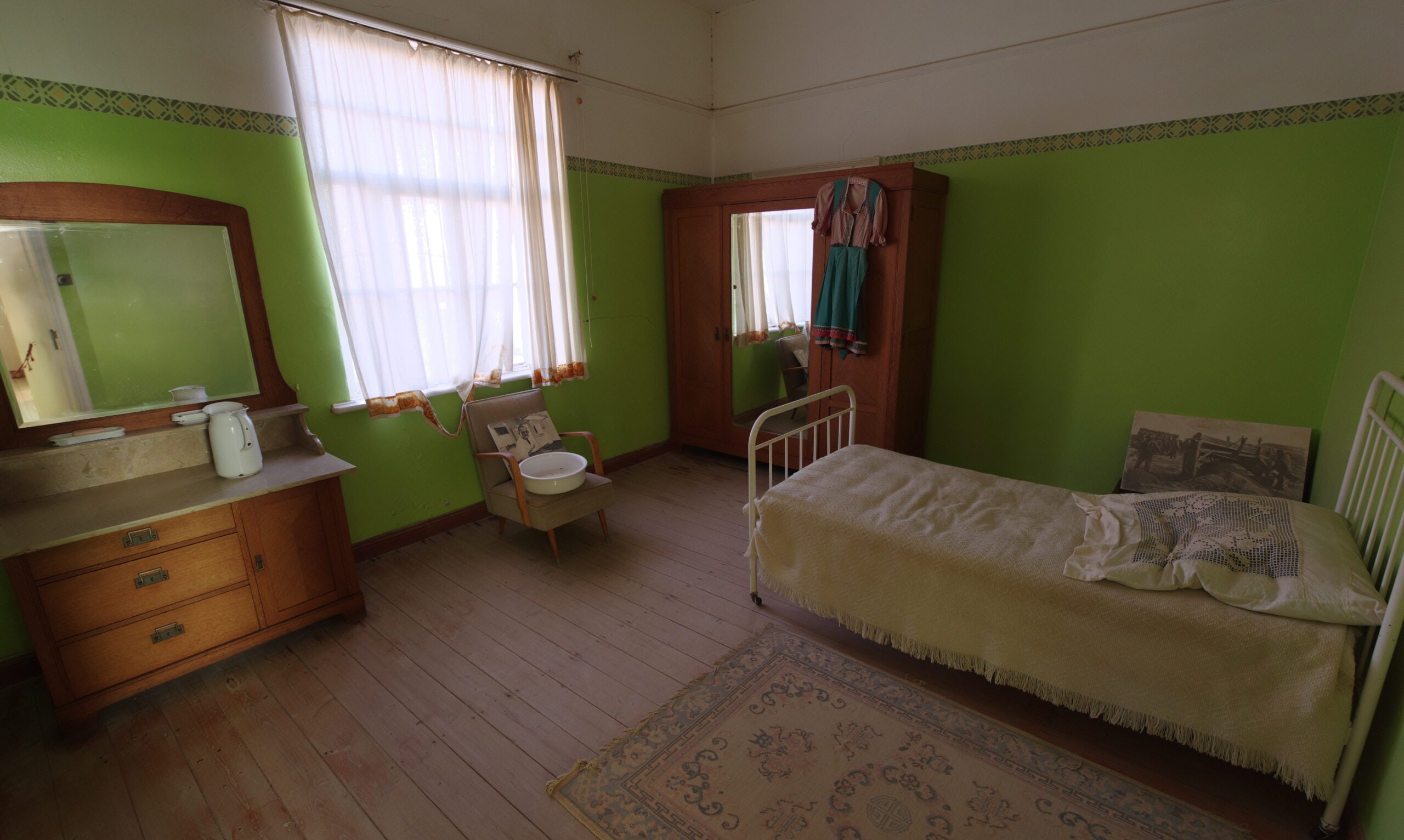
Kolmanskop is located on the edge of the so-called “Sperrgebiet” (literally ‘closed-off area’), another exclusion zone of sorts – in this case not because of radiation but because of ongoing diamond mining further south inside the area. You need special permits to be allowed in, but you can go on all-day special 4×4 Jeep tours to see a number of non-refurbished mining ghost towns deeper in the “Sperrgebiet” (e.g. Pomona) as well as ruins of associated structures. At one such site I encountered this left-behind rusty old bed frame:
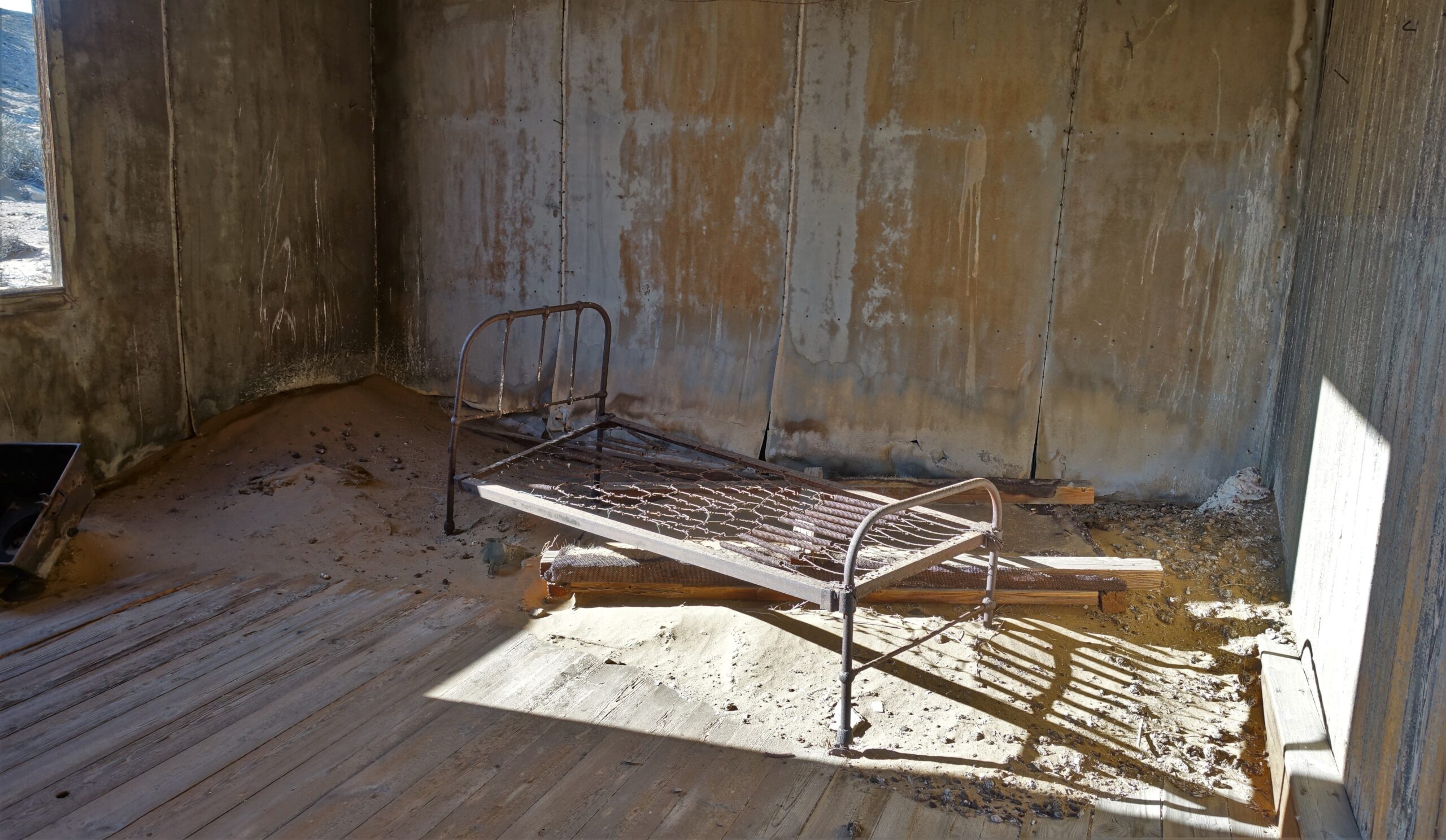
A different sort of bed is found aboard ships, i.e. bunks, aka berths, such as in this next photo:
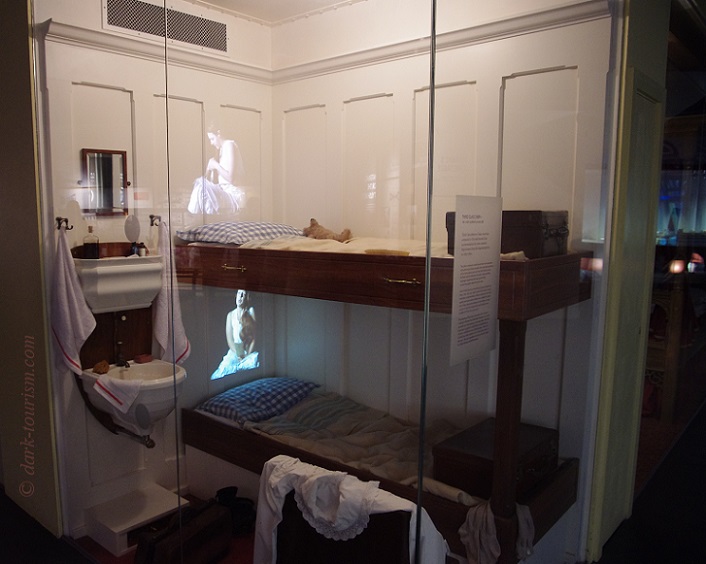
This was taken at the Titanic Belfast attraction in the capital of Northern Ireland at the place where RMS Titanic had been built at the Harland & Wolff shipyards (now converted into a “Titanic Quarter”), before it embarked on its maiden voyage to America which so tragically ended in the ship’s sinking after a collision with an iceberg. It’s probably the most famous and best-known shipwreck story in history. This is lavishly told at the Titanic Belfast, including full life-size exhibits such as this one, complete with video projections of passengers (well, of actors pretending to be passengers) supposed to bring it all to “life”.
Another passenger cabin reconstruction I found at Q Station in Sydney (see also the hospital photo above!). In this case it’s a first-class cabin with a proper full-size single bed:
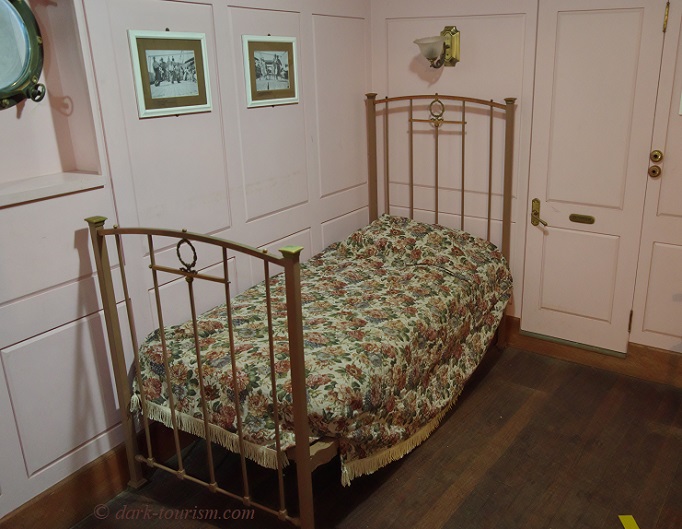
The separation into first, second and third class aboard the ships that brought immigrants to Australia was also transferred to the quarantine station that the newly arrived passengers had to go through first. Accommodation in first and second class was relatively comfortable, much less so in third class, and even less so in an extra added “fourth class” namely for “Asiatics” (meaning all immigrants of non-European descent, mainly Chinese and Indian – a term that today sounds decidedly racist).
Immigration has often been the result of fleeing one’s home country. In the case of Germany before the “fall” of the Berlin Wall that was typically fleeing from one Germany, namely the East (the GDR) to the other, the West (the FRG). Those who made it were often first housed in refugee centres, the most notable of which was at Marienfelde in the south of (West) Berlin. Today this is a memorial site, and amongst other things you can see original rather cramped rooms for GDR refugees with two double-tier bunk beds:

One of my many trips to Berlin was in May 2016, when the effects of the 2015 refugee crisis were still very palpable (some say they still are). When I was on a tour of the former Tempelhof Airport terminal building, the view out the windows overlooking the apron revealed large tents functioning as an emergency refugee camp, and in one area there was a cluster of newly delivered bunk beds to be turned into yet more refugee accommodation:
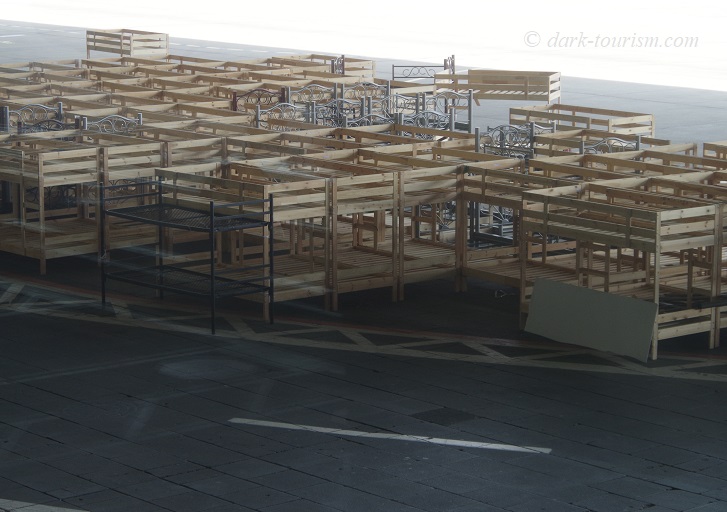
Staying in Berlin, one dark-tourism attraction is a tour of a large Cold-War-era fallout shelter for civilians in an underground car park, where people were expected to seek refuge in the event of a nuclear war – again it’s narrow bunk beds, four-tier this time:
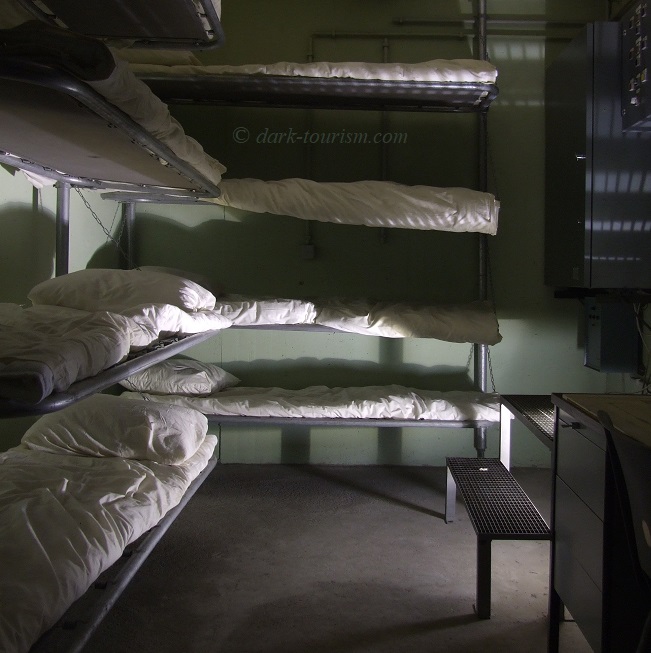
This preserved shelter is part of the “Story of Berlin” attraction, which is currently undergoing substantial reconstruction and won’t open again until some point in 2026. I just hope that this fallout shelter remains intact and will still be made accessible to visitors.
Rather cramped sleeping arrangements are also typical for submarines, where space naturally comes at a premium. Hence there’s often a “hot bunking” system in place, whereby two or three crew members share a bunk one after the other according to the times when they’d be on watch, so one crew member off watch would crawl into a bunk just vacated by another, whose watch was beginning, leaving behind a pre-warmed bunk. Often bunks would even be directly above torpedoes or other equipment. In larger submarines, the space restrictions are less severe, but there’s still pretty little privacy. Here’s a photo of a section of the crew quarters aboard the French nuclear SLBM submarine Le Redoutable, which now forms part of the Cité de la Mer maritime museum in Cherbourg:
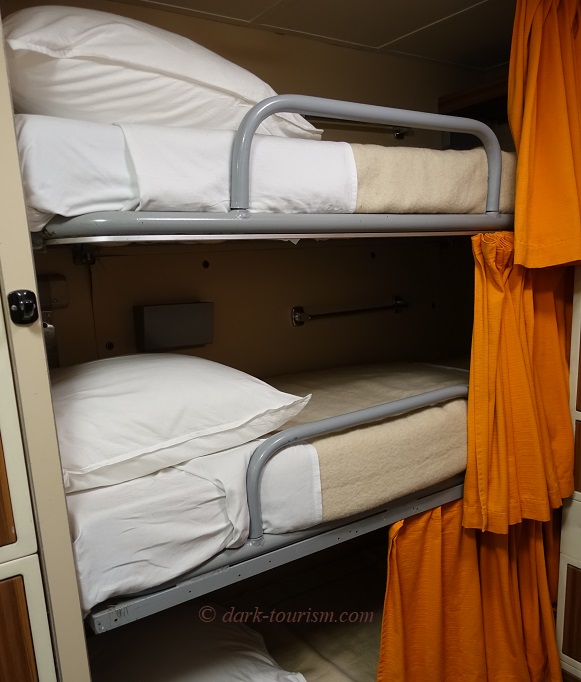
Does not look too uncomfortable, you may think, yet quite cramped it still is – only the captain and high-ranking officers would have had separate single cabins with relative comfort.
Another submarine I visited only recently, namely on my trip to Portugal last month (see the previous Blog post!). At the port of Cacilhas on the southern banks of the Tagus River opposite Lisbon, the submarine U164 Barracuda has recently been turned into a visitor attraction too. This is a much smaller sub, and the bunk beds for the crew look like this:
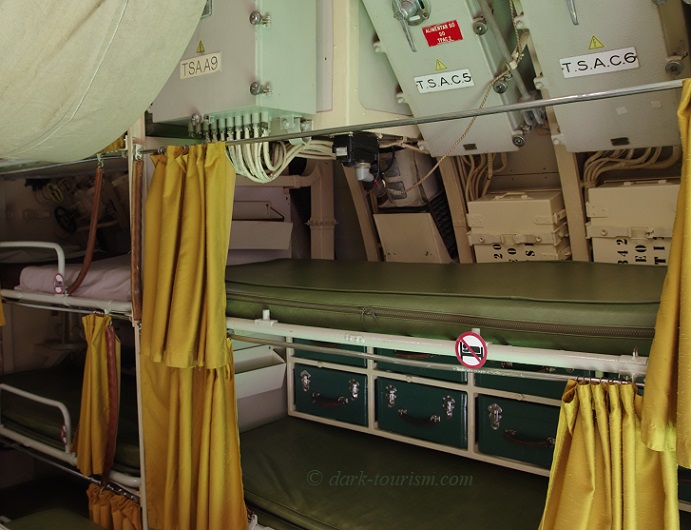
Note the little sign prohibiting any “test-lying” on the bunks. My wife said she would actually have been tempted, whereas I, being as tall as I am, wouldn’t even have fitted in even if I had wanted to …
But with this I shall come to a close – 25 bed pictures is enough for a single themed Blog post.
In one of the next Blog posts I will also add another theme poll, but not yet here. Bear with me please …

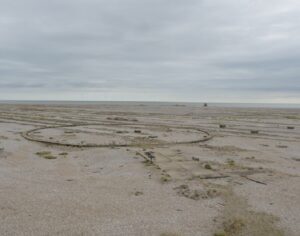
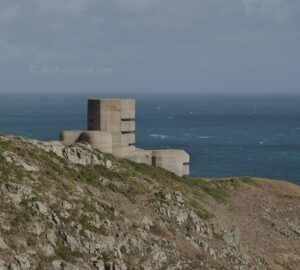
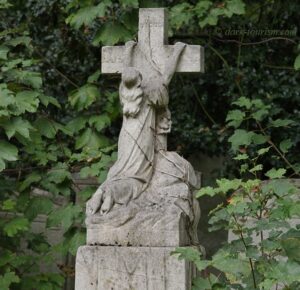
3 responses
Impressive! Thank you so much Peter!!
Very interesting – enjoyed reading this.
thanks!